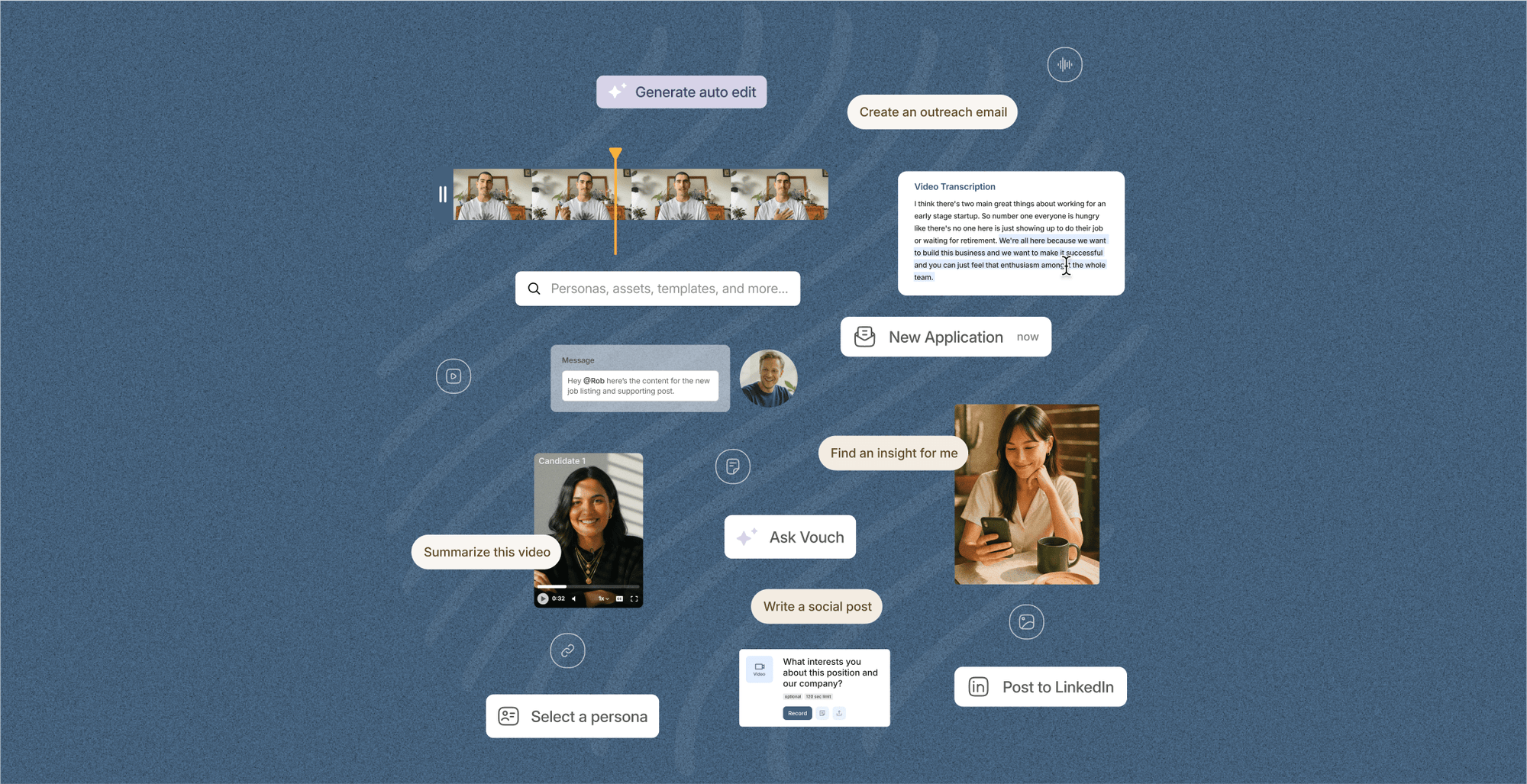If you are looking for ways to improve your employee engagement levels to make your workplace a thriving hub of productivity, then this article will be a guiding light.
Employee Engagement strategies are the backbone of any successful organization today, especially if you have aggressive or ambitious business targets.
So, let's delve into the different types of employee engagement - and explore ways to make your workplace a more engaging and fulfilling environment in 2026.
What Are The Three Core Types of Employee Engagement?
While there are always different levels of engagement and employee personalities, the simplest way to begin working on your employee engagement is by looking at your company culture and Employer Brand is to imagine employees falling into three categories: Engaged, Not Engaged, and Disengaged.
Let's explore these three types of employee engagement further:
1. Engaged Employees
These individuals are passionate, committed, and enthusiastic about their work.
They're the backbone of high productivity and innovation. These employees are also invested in your Employer Brand, and feel rewarded financially or in their career development.
Engaged Employees are easy to identify, looking to take on extra job responsibilities and make an extra effort on almost every task they are handed.
However, you need to be careful of a few things with overly engaged employees.
These warning signs that you need to look out for include burnout without a healthy work-life balance, and also politics. Overly engaged employees can be ruthless in the pursuit of career advancement. They might see themselves as someone who should be further up in your business hierarchy, yet may be too driven for a management role where the team come first, not their own ambitions.
2. Non-Engaged Employees
Often highly skilled and experienced, non-engaged employees fulfil their tasks but might lack genuine passion.
They're essentially coasting along without much zeal. Often, a previously Engaged Employee can "switch off" when they don't see the financial or career growth they need (or deserve) and feel that if the company aren't investing in them personally, why should they invest in the company?
Burnout is also real in our modern work culture, and this is where your Employee Value Propositions come in: to promote a healthy work-life balance and turn these not-engaged employees into engaged employees.
This can also ensure these skilled and experienced employees don't hurt your retention rates.
3. Disengaged Employees
Unhappy and underperforming, these employees might even spread negativity in the workplace.
The employees are also not concerned with your customer experience, which can be the most concerning factor for your Employer Brand.
With these disengaged employees, you may need to go deeper than incentives and look at the fundamentals of Employee Motivation itself to work on drivers of employee engagement, and work on emotional engagement strategies.
Understanding these distinctions is pivotal for crafting effective strategies to enhance engagement levels.
Bring your employer brand to life
- Empower employees’ storytelling
- Transform careers sites with video
- AI-driven video editing
- Publish videos anywhere

What is The Role of Leadership in Employee Engagement?
Effective leadership is about more than managing or checking the boxes.
Today's leadership is about being a people leader, creating authentic and meaningful connections between managers and employees at all levels, and inspiring commitment and motivation with shared core values.
Research highlights that acknowledgment from a direct manager or senior leader can be more motivating than financial incentives like stock options. Investing in quality management practices that prioritize trust-building, guidance, and support significantly impacts employee engagement.
But most importantly, when leaders actively listen, offer constructive feedback, and recognize achievements that align with your company values, they create a culture of loyalty and commitment.
Steve Jobs once said, "A good manager can take a team of average performers and transform them into a high-performing unit."
The relationship between managers and employees significantly impacts commitment levels and an alignment of values.
Open communication, collaboration, understanding personal values and building a sense of connection, trust, and willingness among employees to go beyond their duties is what a great team leaders and even c-suite corporate leaders do.
1. Effective Communication for Enhanced Engagement
Clear, honest, and frequent communication forms the bedrock of an engaged workforce and personal growth amongst your employees.
When employees feel informed and connected to your organization's vision, it boosts engagement, motivation levels and performance levels.
Transparency through regular updates, sharing successes, and, importantly, acknowledging failures builds trust. Encouraging employee involvement in decision-making shows their input matters and is one of the most significant factors for job satisfaction.
2. Cultivating a Positive Corporate Culture is Vital in 2026
A positive workplace culture is the cornerstone of employee happiness and motivation.
When employees feel valued and supported, they're more engaged and productive. Investing in a positive culture reaps rewards like increased engagement and overall profitability. Values, open communication, and prioritizing employee growth contribute to fostering this uplifting atmosphere.
3. Rewards, Recognition, and Motivation
Recognizing employees' efforts is key to motivating them. It's not just about financial incentives; appreciation through awards, shout-outs, and thank-you notes uplifts morale. Differentiating performance and rewarding exceptional contributions drive a culture of excellence.
Naturally, professional development opportunities should be given in any company, but the best rewards go beyond promotion. They inspire people in their professional and personal lives.
4. Promoting Growth and Development
Investing in employees' professional growth and development is a given. Often, a highly engaged employee "switches off" because they don't feel their investment in the company is returned - it may feel like a one-way relationship to them, which is also a major contributor to turnover rates.
Growth also extends to offering learning opportunities, as in our modern professional lives, constant growth is essential
5. Accountability and Performance Management
Holding employees accountable while providing constructive and regular feedback drives performance.
Clear expectations and regular check-ins help employees understand their roles and contributions to organizational goals, while inspiring innovative ideas and cultural alignment. Employees who feel heard will often go the extra mile, which is why regular feedback matters.
What are 7 statistics on Employee Engagement with real website sources?
Here are seven key statistics on employee engagement, reflecting recent insights into the workforce:
1. Quiet Quitting
Approximately 59% of employees are "quiet quitting" — fulfilling only their basic responsibilities without enthusiasm. An additional 18% are "loud" or actively disengaged, which highlights the importance of addressing engagement to reduce these trends Worldmetrics
2. Economic Cost
Disengaged employees cost the global economy nearly $8.8 trillion annually due to lost productivity, making engagement an essential factor for financial health at both company and economic levels Vantage Circle SelectSoftware
3. Profitability and Productivity
Companies with highly engaged teams are 23% more profitable and see a 14% increase in productivity. This correlation between engagement and profitability emphasizes the impact on bottom-line performance SelectSoftware
4. Retention Rates
Engaged employees are 31% more likely to stay with their company, significantly reducing turnover. For high-turnover industries like retail, engagement can lower turnover by up to 21% Techopedia
5. Absenteeism
Engagement helps reduce absenteeism by 41%. This reduction is linked to the sense of responsibility and satisfaction engaged employees feel, which leads to fewer sick days and greater reliability Worldmetrics
6. Recognition's Impact
About 82% of employees feel that being recognized for their contributions improves their engagement, pointing to the importance of appreciation and feedback in maintaining a motivated workforce Vantage Circle
7. Engagement by Work Location
Hybrid employees show the highest engagement at 35%, followed by remote employees at 33%, and on-site employees at 25%. This data suggests that flexible work options may enhance engagement and satisfaction among employees WellSteps
These statistics highlight the multifaceted benefits of fostering an engaged workforce, from financial performance and reduced turnover to employee satisfaction and loyalty.
FAQs
What are the different types of employee engagement?
The different types of employee engagement are engaged, not engaged, and disengaged. Engaged employees are passionate and committed to their work, engaged employees complete their tasks but show little interest, and disengaged employees are unhappy and underperform.
How does leadership impact employee engagement?
Leadership plays a critical role in employee engagement. Meaningful relationships between managers and employees are vital for fostering engagement. Praise from a direct manager (personal investment) is twice as effective at motivating employees compared to some other financial-based incentives.
Why is effective communication necessary for employee engagement?
Good communication builds trust within the organization and fosters engagement. Keeping employees informed about successes and failures ensures transparency and promotes a culture of engagement and collaboration.
How does corporate culture affect employee engagement?
A positive corporate culture contributes to employee happiness and motivation. Companies with a strong culture generate higher returns on investment. Investing in creating a positive work culture benefits both employee engagement and overall company profitability.
How can recognition and rewards enhance employee engagement?
Recognizing and rewarding employee contributions is a powerful motivator. Employees state that they would work harder if they were recognized more often. Having formal recognition programs and informal appreciation gestures reinforces desired behaviors and fosters engagement.
Recognition also comes in the form of flexible work arrangements, as some employees may have other commitments, and by supporting their needs, you are showing that you value them.
Why is accountability and performance management important for employee engagement?
Holding employees accountable and providing timely feedback are essential for performance and engagement. Immediate praise reinforces desired behaviors, while constructive criticism helps address issues before they escalate. Employees who receive honest feedback feel engaged and motivated to excel.
Why is employee engagement critical for businesses?
Employee engagement is crucial for maximizing productivity and creating a positive work environment.
Understanding the different types of engagement and implementing effective strategies, such as leadership, communication, culture, rewards and recognition, development programs and growth opportunities, accountability, and social responsibility, significantly boost engagement levels and ensure long-term success.
Conclusion
Employee engagement isn't just a checkbox for companies; it's the linchpin for a thriving workplace.
Understanding the types of engagement can significantly boost engagement levels and secures long-term success. Remember, prioritizing employee engagement through these practices creates a workplace where everyone feels valued, motivated, and empowered.
Ultimately, this leads to higher productivity, satisfaction, and overall success for the business.
Recognizing and rewarding employee contributions, providing growth and development opportunities, and holding employees accountable through performance management are also crucial best practices for achieving high levels of employee engagement.
These factors are also key to your Employer Brand and Recruitment Process, as your engaged employees are the best advocates for your company when it comes to hiring and becoming an employee of choice.
Tools like Vouch can also help you drastically improve Employee Engagement, where you can leverage video to provide real-time feedback and education for your employees while helping your remote employees feel like they are a close-knit part of the team.
Improve Your Employee Engagement With Vouch!
Loved by companies like Canva, Nike, Cisco, HubSpot, Amazon and more, tools like Vouch make leveraging video in your business remarkably easy.
Be sure to book a Vouch demo today and chat with a video content expert.
You might also like

Elevate Your Brand Today With Vouch
Discover how Vouch can accelerate talent acquisition while helping you stay on-brand.






